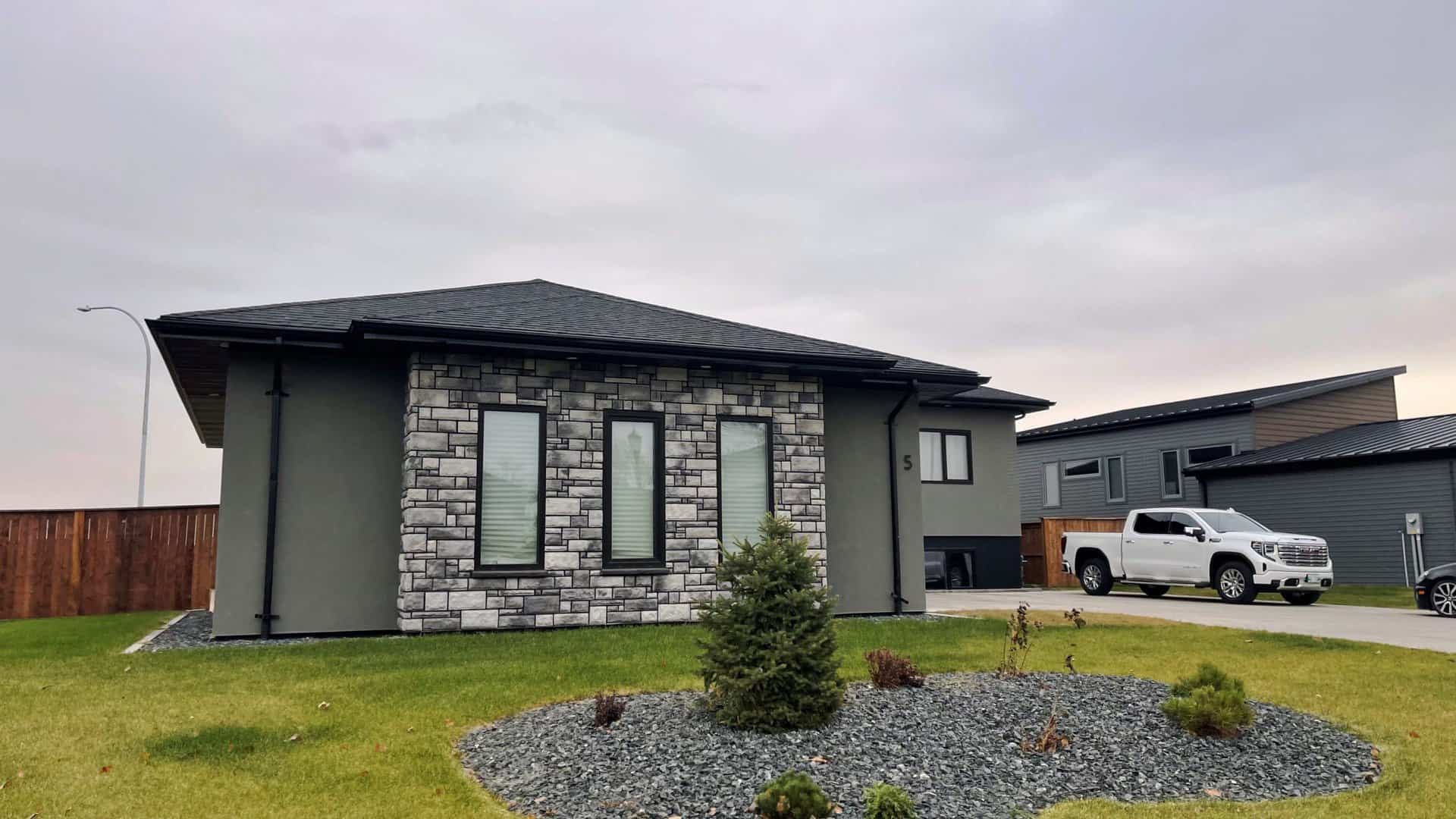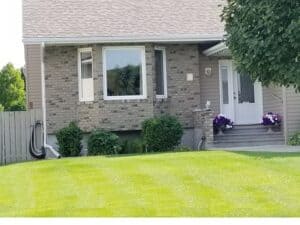German tilt turn windows are gaining popularity in the United States and Canada. This trend is explained by search for more efficient, user friendly products in North America. There are several differences between American and European style tilt and turn windows that are listed below:
Low Energy Cost
The most notable difference is the cost of energy consumption. German tilt and turn windows are known for their outstanding thermal insulation that allows to keep the house at a set temperature for a longer period of time. The high initial higher purchase cost of German design specialty windows (in comparison with regular double pane windows) is soon outdone by the utility bill savings. Tilt turn system is often implemented in passive house windows to achieve excellent thermal insulation.

Our efficient windows outperform many competitors when it comes to R-value for glass units. Regular triple pane units with one low-e glass have an R-value of 5-5.5, depending on the quality of the glazing. Double pane products have R-value of 3.7-4. Our regular options incorporate tow low-e glasses, achieving R-value of 8-8.5. Such custom window can bring a lot of value to the homeowners in North America/
High-Quality Glass
To increase the insulating ability of a both commercial and residential windows, extra glass is added in the mix. In the US, houses are normally equipped with double pane casement windows. They have a single layer of air insulation to combat outside climate and excessive noise. Whereas, German design windows offer triple glazing that consists of three glass panes with two layers of air insulation between them. This increases the thermal performance of windows as well as their sound insulation properties, ensuring their high performance. Our goal is to maximize the amount of light that goes through the windows while keeping them energy efficient at the same time. That is why we offer only premium quality glazing. We provide two low-e glasses in our triple windows which exceeds the level of visible transmittance by 6% when compared to double pane products with one low-e glass (common option among American manufacturers).
Quadruple pane efficient windows add one extra pane of glass with an extra layer of air insulation. This option is used in areas with extreme weather conditions but requires a specific assessment of the situation. We offer complimentary consulting services to determine if quadruple pane German window would improve the quality of life for homeowners in a specific area.
Soundproofing
Most of the outside noise comes inside the house through the casement windows. It has a great negative effect on the comfort level of the homeowners. It can become a source of discomfort for many people living in urban areas in the United States and Canada. Our tilt and turn windows aim to solve this problem.
We provide inexpensive soundproofing upgrades to make our customers’ lives more peaceful and enjoyable. We work with every customer individually to find a perfect solution for each specific case. We have upgrades that allow to achieve the same level of soundproofing as walls do or sometimes even better.
Performance-Based Design
Unlike double hung or cranking style windows that are common in the United States, German style products have a different fenestration system. They are fixed, tilt and turn curtain wall windows. Fixed German style windows do not open but the glazing maximizes benefit of their physical properties. Tilt turn windows are operated with great ease and comfort. Their wide open position allows quick ventilation if such is required. Two other ventilation modes conduct air exchange in a more subtle way. Curtain wall, also known as storefront windows, are perfect for commercial buildings, as they allow lots of natural light inside. They also make the building look modern, showcasing products really well. They upgrade the office space by elevating the work environment, making the space inside look lighter.
German UPVC Windows
UPVC windows have shown to stand the test of time as they are made of quality materials. Steel reinforcement in the window frame adds structural strength to the products, which is crucial for both residential and commercial projects. High performance, cutting-edge technology, and long term durability are signature features of tilt turn windows and door system.
Visual Impact
German style casement windows are manufactured using modern technology to ensure high quality and long term durability of the products. GL Advanced Windows offers them in a variety of colors which adds unique touch to the exterior and interior look of the building. Different designer elements, such as grills can be implemented for an additional element of décor. High quality of the materials ensure that the tilt turn windows won’t lose their condition within few years and will remain to look beautiful for a long time.
They are perfect for replacing old windows with modern European style tilt and turn ones. Easy installation and low maintenance requirement make them an appealing option for replacement windows for many people. Special frame can be used during manufacturing process of small windows for a house.
Since GL Advanced Windows offers commercial and residential windows in a variety of styles and colors when it comes to window frames, they can made a building look more appealing, increasing its market value.
Making the Choice
Most people still buy American windows over German uPVC windows. It does not matter if either one is better than the other because both windows have flaws and benefits. Most people lean towards the traditional American windows for low cost and a familiar appearance by disregarding the performance features of German technology products. Yet, the overall savings in utility bills as well as increased comfort level justify the higher cost of German style windows with triple glazing and high thermal performance.
So before buying a glass window, elements like style, aesthetics, energy efficiency and the cost must be considered. We do our best to provide most accurate information to ensure that our customers have all the information they need.
How to Operate a German Windows
Tilt turn windows are arguably one of the best options the market has to offer. The system is very convenient, easy to operate. When the handle looks down, it means that the casement window is shut. Rotation by 90 degrees wide opens the window for a rapid, effective air exchange. Turning handle by another 90 degrees (180 degrees from the initial “shut” position) results in top part of the windows tilting towards the inside. This position allows the fresh air to enter the room in the upward direction conducting in a barely noticeable air exchange. Tilt position aims to minimize the risks of the home dwellers catching a cold.
Quick and effortless motions are very senior friendly. They do not require continuous rotating motions, like in cranking system. Installing custom windows with tilt and turn system is often advised for people that experience pain in the wrists and arms as it minimizes their level of discomfort.
The structural design of the products makes them a common option when it comes to replacement windows. Energy efficiency of European windows just adds to the overall attractiveness of the products.
Importance of the main coefficients
GL Advanced Windows ships the products across Canada and the US. All required tests as well as certifications were obtain in order to comply with the regulations. Few calculations measure the performance of each certified German style glass window before installing. These values are especially important when customers are interested in passive house windows and door system.
U-Value
First all, U-Value is calculated which shows a number between 0.12 and 1.2. Lower U-value determines that efficient German uPVC windows performance is optimal because it transfers less solar heat. US Department of Energy (DOE) suggests a U-value of 0.3 or less to maximizing efficiency. Comfort and efficiency are further boosted by selecting casement windows with special low-e glazing.
SHGC
The Solar Heat Gain Coefficient (SHGC) reflects the rate of solar heat that enters the house once it has reached the glass. Ideal SHGC value is between 0 and 1. The lower the SHGC, the less solar heat it transmits. This rating method is issued by the National Fenestration Rating Council (NFRC). The ratings are based on the performance of the whole window including the effects of the frame. Generally, glass windows with fewer panes have higher SHGC values.
Recommended Specifications
- Achieve U-value of 0.15
- Triple or quadruple glazing (German triple glazed windows are recommended)
- Two Low-E glasses
- Optimal SHGC level for the climate where the house is location and what cardinal directions the glass windows are facing (this is crucial for both residential and commercial buildings).

